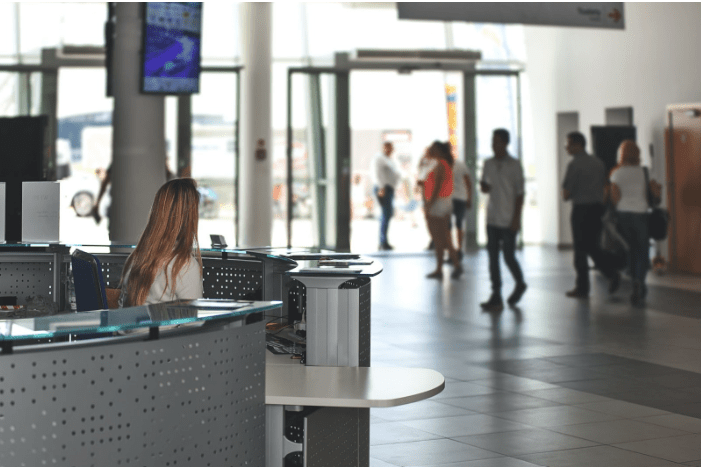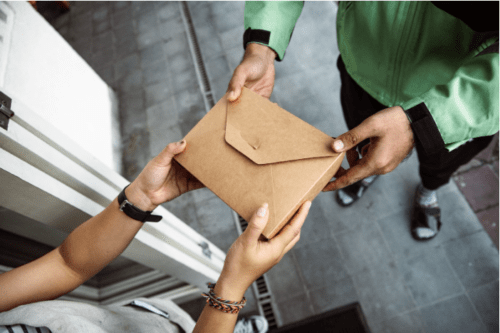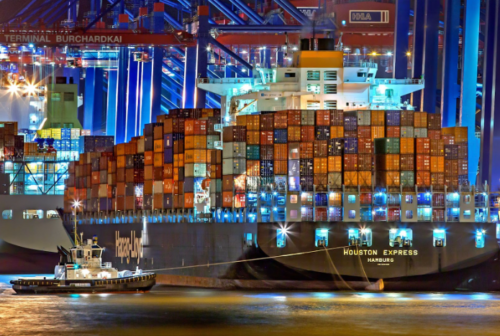Customs Clearance: Meaning and Process

International trade can be complex and time-consuming, but it is crucial for businesses that import or export goods to understand one of the most critical steps in the process: customs clearance. Customs clearance is the procedure you must follow to legally import or export goods across international borders. The process can be daunting, but this guide will help you navigate it more easily.
Whether you’re new to the world of international trade or need a refresher on everything from customs regulations to country-specific requirements, this guide will provide all the information you need to ensure successful customs clearance. It will also help you understand customs law and why clearing customs is important, define customs clearance success, and answer the question: what does custom clearance completed mean.
What Is Customs Clearance?
Customs clearance is the process of declaring goods to Customs authorities when entering or leaving a country. Individuals or businesses can do this. Goods subject to customs clearance include items that are being imported or exported, as well as personal effects and commercial shipments.
The purpose of customs clearance is to ensure that all applicable import duties and taxes are paid and that goods comply with all relevant regulations. To clear customs, businesses or individuals must provide detailed information about the shipment, including its value, origin, destination, and contents.
Businesses or individuals may also be required to submit supporting documentation, such as invoices or bills of lading. Once customs officers have cleared the shipment, they can release it for delivery.
Customs Clearance Process
Here’s a look at the customs clearance process.
Inspection of Documents
When shipments arrive at a port of entry in the United States, they are subject to inspection by U.S. Customs and Border Protection (CBP). During this process, officers from the government agency, CBP, inspect the documents associated with the shipment to ensure that all required information is present and accurate.
The most common documents required for clearance are:
- Proof of insurance
- Invoice (unless a commercial sample is worth less than $25)
- Port spending (when applicable)
- A packing list
- Certificate of origin (when applicable)
- Air waybill, inland bill of lading, through bill of lading, and ocean bill of lading
- Pre-shipment inspection certificate (when applicable)
- Transportation invoice
Once CBP has verified all the necessary documentation, they will clear the shipment for entry into the United States.
Tax and Duty Payment
After your shipment has been inspected and all required import documentation has been filed, you’ll need to pay any taxes or duties owed on the goods before Customs will release them for delivery. The amount of tax and duty owed depends on several factors, including the type of goods you’re importing, their declared value, and the applicable customs laws.
For example, if you’re responsible for paying taxes and duties (i.e., if your shipment is delivered duty unpaid, or DDU), you need to arrange for payment with the customs authority in your country before they can deliver the goods.
On the other hand, if your shipment is delivered duty paid (DDP), the taxes and duties are included in the price of the goods, and you won’t need to make any additional payments. Either way, it’s essential to be aware of the potential costs involved in importing goods so that you can budget accordingly, avoid a late payment penalty, and get to custom clearance completed status.
Shipment Release
After Customs inspects and assesses the goods, they are released from the warehouse where they have been held. The release process can vary depending on the type of imported goods but typically involves paying any customs duties or taxes owed. Once the release paperwork has been completed, the importer can take possession of the goods and move them to their final destination.
In some cases, goods may be released on a conditional basis, meaning that they must meet specific requirements before they can be moved off-site. For example, toxic chemicals may need to be appropriately labeled and packaged before they are released from customs. Ultimately, the customs clearance process aims to ensure that all imported goods meet all applicable regulations before they enter the domestic market.
How To Navigate Customs Clearance Successfully
This is how to navigate customs clearance successfully.
Ensure Documentation Is Accurate
Customs clearance can be complicated and time-consuming, mainly if you are unfamiliar with the regulations and procedures. Therefore, one of the most important things you can do to achieve a successful outcome is to ensure that all of your documentation is accurate.
Ensuring your documents are accurate includes making sure that all items in your shipment are correctly listed and that you’ve stated their value correctly. Discrepancies between your documentation and the actual shipment contents will likely delay your shipment while Customs officials investigate the matter.

In some cases, shipments may even be refused outright if the inaccuracies are deemed to be substantial. As such, it is essential to take care when completing your documentation to avoid delays or customs clearance problems.
Always Check International Trade Laws
Anyone who has gone through customs knows it can be quite a process. There are a lot of forms to fill out, and sometimes it can feel like you’re at a centralized examination station and the Customs officer is grilling you. But if you know what you’re doing, it can be a smooth experience.
One of the most important things to do is to become familiar with the international trade laws that apply to the goods you are importing or exporting. These laws constantly change, so staying up-to-date on the latest requirements is essential. In addition, you need to know what Incoterm the buyer and seller have agreed on.
The agreed Incoterm determines who is responsible for paying customs duties and taxes and can also affect how your goods are shipped. Ask a professional for help if you need clarification. With some preparation, you can successfully navigate the customs clearance process.
Consider What Goods You’re Shipping
Customs clearance can be daunting, but you can do a few things to make it go more smoothly. First, consider what goods you’re shipping. If you import food, pharmaceuticals, cosmetics, or electronics into the United States, you need to comply with the Food and Drug Administration. There may also be a United States Department of Agriculture examination. It’s essential to contact relevant federal agencies before your goods ship to a port of entry.
Second, make sure you have all the necessary documentation in order. You need a commercial invoice, bill of lading, and other paperwork. Third, be prepared to pay any customs duties and taxes due. The U.S. Customs and Border Protection assesses these fees based on the value of your shipment. By taking these steps, you can help ensure successful customs clearance procedures.
Expect Multiple Customs Clearance Checks
When sending international shipments, be aware that they need to clear customs in each country your goods must pass through. This means that your goods will be subject to a customs clearance check in each country, and each country’s customs clearance completed process may have its requirements, standards, etc.
One of the best ways to ensure successful customs clearance is to expect multiple checks. This way, you can be prepared with all the required documents and information for each country and know exactly what to expect at each process step. It’s also a good idea to research the customs clearance requirements of each country in advance so that you can be sure your goods meet all the necessary standards.
Calculate Your Tax and Duties
For anyone importing goods into the United States, be aware of the potential customs clearance fees that may be owed. These fees are based on the value of the imported goods and the specific tax rates that apply to those goods under the Harmonized Tariff Schedule. In most cases, importers are also required to purchase a bond as surety that all taxes and duties will be paid.
To calculate the overall cost of customs clearance, importers should first determine the value of their goods. They can do this by adding up the cost of all individual items and any shipping or insurance charges. Once they know the total value, importers can look up the specific tax rates that apply to their goods under the Harmonized Tariff Schedule.

These rates vary depending on the type of goods being imported, so it is important to consult the Harmonized Tariff Schedule beforehand. Finally, importers should multiply the total value of their goods by the appropriate tax rate to calculate the taxes and duties they will owe.
While navigating the customs clearance process can be tricky, taking the time to calculate taxes and duties upfront can help ensure a smooth and successful importation. In addition, by knowing how much is owed in fees, importers can avoid any unexpected charges or delays at the border.
FAQs
Here are some frequently asked questions about customs clearance.
Should I use a customs broker?
The law doesn’t require you to use a customs broker to clear your merchandise. Customs brokers must hold a license from U.S. Customs and Border Protection to represent importers in CBP transactions. You can work with either an independent customs broker or customs brokerage firm.
How long does customs clearance usually take to complete?
On average, a customs clearance takes less than 24 hours to complete. However, the inspection process can take several days or weeks, depending on the number and type of imported products. Therefore, it is essential to plan and allow for additional time if necessary.
Can a shipment be held after passing customs clearance?
Yes, a shipment can be held by Customs even after it has passed clearance if the documentation contains mistakes or is missing critical information. This can cause delays in getting your shipment delivered, so it’s essential to ensure the necessary documentation is in order before submitting it to customs.
Do I need to pay import duties when exporting goods?
You need to pay import duties if you’re exporting goods from the United States. The amount of duty you need to pay on such merchandise depends on the type of goods you’re shipping and the country you’re exporting them to. You can find more information on import duties by contacting your local customs office.
Conclusion
In conclusion, customs clearance is the process of declaring goods to customs authorities when entering or leaving a country. Customs clearance can be daunting, but with the proper knowledge and preparation, you can navigate it successfully.
By following these tips and using a customs broker if necessary, you can get your goods cleared quickly and efficiently to start selling them in your new market.
